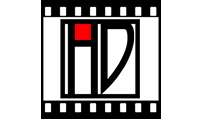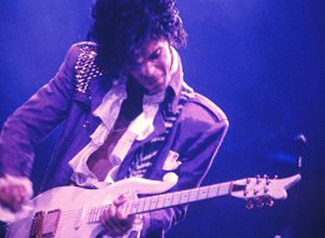Product Description
Ruben Chambers, Torso, 1945


RUBEN CHAMBERS USA
Torso 1945
Signed: Torso 1945, Ruben Chambers (in pencil on back) Ruben Chambers, 1945 (on back)
Size: H: 14” x W: 11”
Framed size: H: 17 13/16” x W: 14 13/16”
Ruben Chambers, Torso, 1945
GRANT MUDFORD (1944- ) Australia
Long Beach 1979
Gelatin silver print
Signed: Long Beach 1979, LB-24/2 (in pencil on back); Grant Mudford 1980 (script in ink)
Framed size: H: 28 ¼” x W: 32 7/16”
Price: $29,000
“Since he moved to Los Angeles from Australia in the late 1970s, Grant Mudford has composed photographs that crisply examine the streamlined geometries of West Coast architecture and landscape. Mudford has zeroed in on the abstract formal relationships lurking within the designs of gas stations, strip malls and apartment buildings. The geometrical arrangements highlighted in his photographs of the masterful modernist structures of Rudolf Schindler and Craig Ellwood have disclosed a link between their midcentury architecture and the contemporaneous hard-edge abstractions of L.A. painters John McLaughlin and Lorser Feitelson.” – Art in America, “Grand Mudford at Rosamund Felsen, September 2003
ALFRED STIEGLITZ (1864-1946) USA
Old & New, New York 1910
Photogravure from Camera Work, Oak frame in the Arts & Crafts style
Signed: Alfred Stieglitz Old & New, New York, RMG #1081.30 (all in pencil on back)
Image: H: 8” x W: 6 1/4”
Page size: H: 11” x W: 7 7/8”
Framed: H: 15 ¼” x 11 ¼”
Price: $18,500
Alfred Stieglitz was an American photographer who was instrumental over his fifty-year career in making photography an acceptable art form alongside painting and sculpture. Many of his photographs are known for appearing like those other art forms, and he is also known for his marriage to painter Georgia O’Keeffe, most famous for her large-scale paintings of flowers.
Stieglitz was born the eldest of six children in Hoboken, New Jersey and raised in a brownstone on Manhattan’s Upper East Side. His father moved with his family to Germany in 1881. The next year, Stieglitz began studying mechanical engineering at the Technische Hochschule in Berlin and soon switched to photography. Traveling through the European countryside with his camera, he took many photographs of peasants working on the Dutch seacoast and undisturbed nature within Germany’s Black Forest and won prizes and attention throughout Europe in the 1880s.
From 1893 to 1896, Stieglitz was editor of American Amateur Photographer magazine; however, his editorial style proved to be brusque, autocratic and alienating to many subscribers. After being forced to resign, Stieglitz turned to the New York Camera Club (which was later renamed The Camera Club of New York and is in existence to this day) and retooled its newsletter into a serious art periodical known as Camera Notes. He announced that every published image would be a picture, not a photograph – a statement that allowed Stieglitz to determine which was which.
Big camera clubs that were the vogue in America at the time did not satisfy him; in 1902 he organized an invitation-only group, which he dubbed the Photo-Secession, to force the art world to recognize photography “as a distinctive medium of individual expression.” Among its members were Edward Steichen, Gertrude Käsebier, Clarence H. White and Alvin Langdon Coburn. Also in 1902 he ceased being editor of Camera Notes and in 1903 started a new independent journal of his own, Camera Work. Photo-Secession held its own exhibitions and its work was published Camera Work, which became the pre-eminent quarterly photographic journal of its day, although in later years its popularity declined markedly and it ceased publication in 1917.
From 1905 to 1917, Stieglitz managed the Little Galleries of the Photo-Secession at 291 Fifth Avenue (which came to be known as 291). In 1910, Stieglitz was invited to organize a show at Buffalo’s Albright Art Gallery, which set attendance records. He was insistent that “photographs look like photographs,” so that the medium of photography would be considered with its own aesthetic credo and so separate photography from other fine arts such as painting, thus defining photography as a fine art for the first time. This approach by Stieglitz to photography gained the term “straight photography” in contrast to other forms of photography such as “pictorial photography” which practiced manipulation of the image pre and/or post exposure.
In the 1930s, Stieglitz presided over two non-commercial New York City galleries, The Intimate Gallery and An American Place. It was at An American Place that he formed his friendship with the great 20th century photographer Ansel Adams. Adams displayed many prints in Stieglitz’s gallery, corresponded with him and also photographed Stieglitz on occasion. Stieglitz was a great philanthropist and sympathizer with his fellow human beings. He once received a phone call on one of Adams’s visits. A man wanted to show Stieglitz some work. He invited him over, looked at the prints, looked at the man in a rather disheveled state of affairs and looked at the work again. He then offered to buy one of the paintings, wrote him a check for $150, gave him five dollars and told him to get something good to eat.
